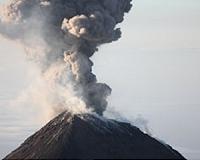| . |  |
. |
Reston VA (SPX) Feb 08, 2011 New discoveries on how underwater ridges impact the ocean's circulation system will help improve climate projections. An underwater ridge can trap the flow of cold, dense water at the bottom of the ocean. Without the ridge, deepwater can flow freely and speed up the ocean circulation pattern, which generally increases the flow of warm surface water. Warm water on the ocean's surface makes the formation of sea ice difficult. With less ice present to reflect the sun, surface water will absorb more sunlight and continue to warm. U.S. Geological Survey scientists looked back 3 million years, to the mid-Pliocene warm period, and studied the influence of the North Atlantic Ocean's Greenland-Scotland Ridge on surface water temperature. "Sea-surface temperatures in the North Atlantic and Arctic Oceans were much warmer during the mid-Pliocene warm period than they are today, but climate models so far have been unable to fully understand and account for the cause of this large scale of warming," said USGS scientist Marci Robinson. "Our research suggests that a lower height of the Greenland-Scotland Ridge during this geologic age was a contributor to the increase of poleward heat transport." "This is the first time the impact of a North Atlantic underwater ridge on the ocean circulation system was tested in a mid-Pliocene experiment," said Robinson. "Understanding this process allows for more accurate predictions of factors such as ocean temperature and ice volume changes." Research was conducted on the mid-Pliocene because it is the most recent interval in the earth's history in which global temperatures reached and remained at levels similar to those projected for the 21st century by the Intergovernmental Panel on Climate Change. Therefore, it may be one of the closest analogs in helping to understand the earth's current and future conditions.
Share This Article With Planet Earth
Related Links U.S. Geological Survey Climate Science News - Modeling, Mitigation Adaptation
 Man, Volcanoes And The Sun Have Influenced Europe's Climate Over Recent Centuries
Man, Volcanoes And The Sun Have Influenced Europe's Climate Over Recent CenturiesBarcelona, Spain (SPX) Jan 21, 2011 An International research team has discovered that seasonal temperatures in Europe, above all in winter, have been affected over the past 500 years by natural factors such as volcanic eruptions and solar activity, and by human activities such as the emission of greenhouse gases. The study, with Spanish involvement, could help us to better understand the dynamics of climate change. Up until ... read more |
|
| The content herein, unless otherwise known to be public domain, are Copyright 1995-2010 - SpaceDaily. AFP and UPI Wire Stories are copyright Agence France-Presse and United Press International. ESA Portal Reports are copyright European Space Agency. All NASA sourced material is public domain. Additional copyrights may apply in whole or part to other bona fide parties. Advertising does not imply endorsement,agreement or approval of any opinions, statements or information provided by SpaceDaily on any Web page published or hosted by SpaceDaily. Privacy Statement |